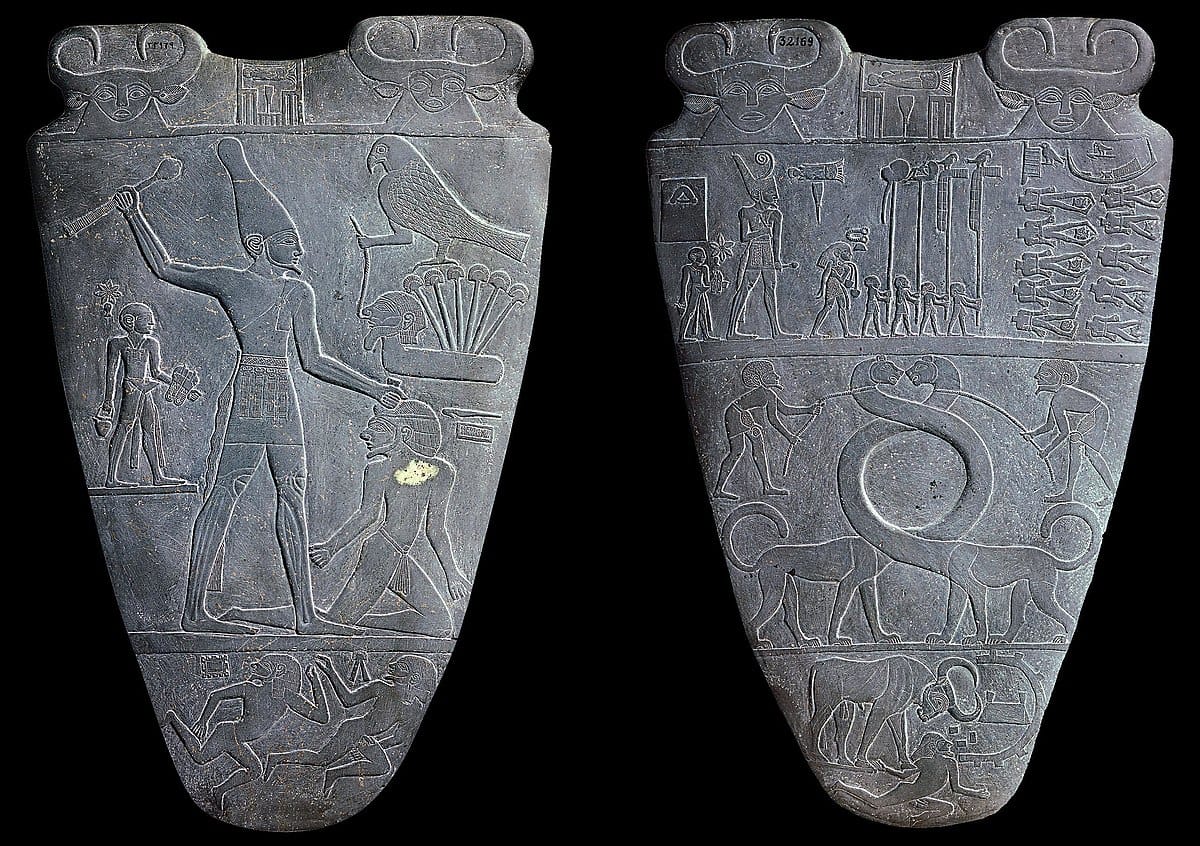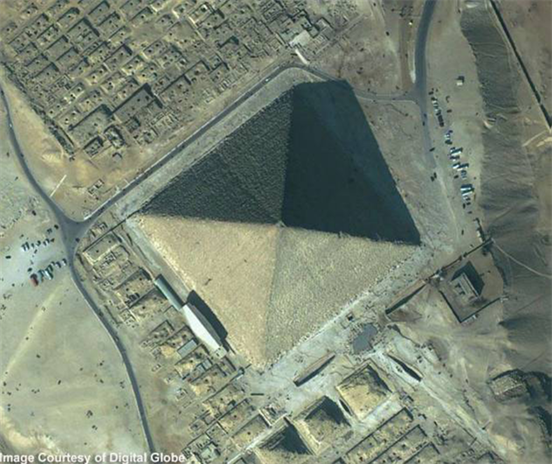New Radar Findings Rekindle the Mystery Beneath Giza
Pyramids are among the most striking and enigmatic structures ever built. Found in cultures across the globe — from the many step pyramids of Mesoamerica to the megalithic tombs of Southeast Asia — they’ve long captured the human imagination. Yet, none have inspired as much awe and speculation as the pyramids of Egypt, particularly those that loom over the Giza Plateau.
These stone giants have stood for over 4,500 years, casting their shadows across centuries of civilization. The Great Pyramid of Khufu, in particular, is a surviving wonder of the ancient world. Despite millennia of study, debate, and exploration, it still refuses to give up all its secrets. It's a marvel of ancient engineering and a mystery that continues to challenge modern understanding.
What makes these monuments so captivating isn’t just their scale — though (I'm pretty sure) standing beneath one does make you feel impossibly small — it’s the sense that they represent something more than just tombs. Their symmetry, alignment, and enduring presence suggest a sophistication that transcends time. And even now, with satellites orbiting the Earth and radar peering beneath its surface, we are still discovering things about the Giza pyramids that mock easy explanation.
Egypts One True King

To understand the pyramids, you have to begin long before their stones were ever stacked. Ancient Egypt wasn’t always the unified land of pharaohs and pyramids. In fact, it began as two separate kingdoms — Upper and Lower Egypt — until a single figure rose to unite them: Narmer.
Narmer, whose name is immortalized on the famous Narmer Palette, is widely regarded as the first true pharaoh. Around 3150 BCE, he consolidated the two regions into a single kingdom, launching what historians call the First Dynasty. This act of unification laid the groundwork for one of the longest-lasting civilizations in human history — a civilization that would thrive for more than 3,000 years. That's a long time, so to ease their studies, scholars have segmented it into the Old Kingdom, The Middle Years, and The New Kingdom.
A few centuries after unification, during the early dynasties of the Old Kingdom, Egypt’s ambitions turned skyward. The age of pyramid building had begun. Djoser’s Step Pyramid at Saqqara broke new ground, but it was during the Fourth Dynasty that the practice reached its awe-inspiring peak. Khufu (also known as Cheops), his son Khafre, and his grandson Menkaure erected the monumental pyramids at Giza — structures so grand that even the Egyptians of later periods saw them as relics of a lost golden age.
By the time Pharaoh Merneptah ruled — over a thousand years after Khufu — the pyramids were already ancient. Later Egyptians marveled at them just as we do today, with a mix of reverence and bewilderment. These weren’t just tombs. These were legacy projects from a time when Egypt had the vision, resources, and audacity to build something that would defy time itself.
The Pyramid In Disguise Part One
When standing before the pyramids of Giza, there’s an instinctive sense that something doesn’t quite add up. These were built over 4,500 years ago, in an era without iron tools, cranes, or modern mathematics — and yet, they rise with astonishing precision. It’s not just the size that baffles historians and engineers alike, it’s the details that resist easy explanation.

For one, the Great Pyramid isn’t simply four-sided — it’s eight. Subtle inward folds on each face, only visible from the air or at equinox light, give Khufu’s pyramid an unseen complexity. No other pyramid shares this feature. Whether this was intentional design or structural necessity, we don’t know. What we do know is that it complicates our understanding of the blueprint — as if the builders had a knowledge we’ve yet to rediscover.
Then there’s the stone itself. Much of the pyramid is built from limestone quarried nearby, but certain internal chambers — like the King’s Chamber — were constructed with massive granite blocks hauled from Aswan, some 800 kilometers away. These blocks weigh dozens of tons each. Moving them that distance, across river and desert, then lifting them into place with no visible means of heavy machinery — that’s an impressive logistical miracle.
Even more puzzling is what’s not there: no construction records. For a civilization that documented everything from taxes to religious rituals, the Egyptians left behind no detailed blueprints, no scrolls outlining techniques, no celebratory carvings of the workforce. Aside from a few quarry marks and one ancient journal fragment found near the Red Sea, the pyramids seem to have built themselves and then fallen into silence. That absence has opened the floodgates — for speculation, for theories, and for questions that haven’t gone away.
Whether these anomalies are the result of lost knowledge, practical necessity, or something else entirely, one thing is clear: the more we study the pyramids, the more elusive their story becomes. They're massive tombs — but are puzzles carved in stone.
The Pyramid In Disguise Part Two
For centuries, our understanding of the pyramids was limited to what we could see from the surface. But in recent years, science has peered inward — and downward. New technologies have begun to strip away layers of mystery without lifting a single stone, revealing that the story of Giza may run deeper than we ever imagined.
One of the most groundbreaking tools in this effort is Synthetic Aperture Radar (SAR), a technology originally developed for space and military use. By bouncing radar signals off the earth and collecting the echoes that return, SAR allows scientists to see through solid ground — and in the case of the Giza Plateau, it’s given us a glimpse into what lies beneath those timeless monuments.
In a recent wave of studies, SAR scans beneath the Pyramid of Khafre revealed something startling: eight cylindrical shapes arranged vertically below the structure, each seemingly encircled by a spiral-like tunnel. Even more astonishing, these shafts appear to lead to five additional chambers stacked below the King's Chamber — a vertical sequence that has never been documented in any official excavation.
The implications are enormous. If these readings are accurate, they suggest that what we see on the surface may only be part of a much larger architectural system — one that extends deep into the earth. Combine that with earlier findings, like the void discovered inside Khufu’s pyramid via cosmic-ray muon imaging in 2017, and a new picture begins to form: the pyramids are not static tombs, but dynamic structures with undiscovered complexity.
This shift in perspective has quietly challenged traditional archaeology. It’s no longer just about stones stacked in the desert — it’s about the possibility of chambers we’ve never entered, networks we’ve never mapped, and a plan we’ve never fully understood. And yet, for all the data we now have, the mystery only deepens.
What exactly lies below? Who designed these vertical shafts and chambers — and why? And more importantly, will we ever be allowed to find out?
The Mixed Reception
In 2022, a paper quietly appeared online that claimed to confirm some of the very anomalies SAR had begun to reveal. Its authors: Dr. Corrado Malanga, an Italian researcher known more for his fringe interests than peer-reviewed publications, and a contributor from the conspiracy-heavy world of InfoWars. Together, they presented findings that suggested a complex subterranean system beneath the Giza Plateau — a discovery that, if true, could rewrite everything we thought we knew about the pyramids.
The reaction was… mixed.
On one hand, the data was intriguing. Their report described multiple geometric structures beneath the Khafre pyramid, including what they identified as cylindrical shafts and two massive, cube-shaped chambers buried deep within the earth. The formations appeared symmetrical, planned — not geological accidents. If accurate, they supported earlier SAR interpretations and hinted at an organized network lying undisturbed for thousands of years.
But on the other hand, the source of the claims triggered instant skepticism. The research hadn’t gone through formal peer review. The presentation of the findings — in part through alternative media and conspiracy platforms — raised red flags in academic circles. Egyptologists, already cautious by nature, were quick to point out the lack of verifiable methodology. Extraordinary claims, as the saying goes, require extraordinary evidence.
The connection to InfoWars didn’t help. That association pulled the entire conversation out of archaeology and into the realm of internet speculation, where wild theories and scientific data tend to get tangled together. As a result, even those who found the SAR data compelling hesitated to engage. Credibility matters in science, and this particular paper was now radioactive.
Still, one uncomfortable question lingers: what if they’re right?
In early 2025, a new wave of SAR research brought the conversation back — this time with high-resolution imaging and new sets of eyes. A larger team, still affiliated with Malanga and Biondi, reported remarkably similar findings: eight vertical shafts beneath the Pyramid of Khafre, each plunging over 600 meters, encircled by what appeared to be spiraling tunnels. At the base of these shafts? Two massive, cube-shaped chambers — each roughly 80 meters wide. The exact features Malanga had described three years earlier.
This new round of data, while still awaiting academic validation, has reignited interest in the original claims. Not because of who said it first, but because the structures seem to be showing up again. Which raises an unsettling possibility: that the original 2022 team, despite their dubious affiliations, may have been onto something long before the world was willing to listen.
Even if the packaging is flawed, the content has touched on something that mainstream tools like muon imaging and SAR are also beginning to uncover. The real issue is not whether the information came from the fringes — it’s whether it can be confirmed. And until the ground is broken and the chambers are explored, we’re left suspended between tantalizing possibility and scientific restraint.
Still, No Means No
If there’s one thing both mainstream archaeologists and fringe theorists can agree on, it’s this: the pyramids still hold secrets. And maybe the most frustrating part is that we’re not allowed to go looking for them — at least not in the way we want to.
Despite increasingly sophisticated scans suggesting hidden shafts and deep chambers, Egypt’s antiquities authorities have remained firm. No excavation permits. No drilling. No probing beneath the Khafre pyramid to verify the anomalies. For now, the radar data remains just that — data, floating in the in-between space where science meets speculation.
Why the hesitation?
On the surface, the reasoning is sound. The pyramids are world heritage sites — irreplaceable and fragile. The idea of digging into or around them sparks immediate concerns about preservation. Even a small miscalculation could damage a monument that has survived earthquakes, looters, and erosion for thousands of years.
But beneath that official stance, there’s another layer of tension. The narrative surrounding the pyramids — as tombs built by Khufu, Khafre, and Menkaure — has stood largely unchallenged for over a century. To open the door to alternative possibilities, especially those suggested by non-academic voices, is to risk not just physical damage to the structures, but also ideological disruption.
And yet… the evidence is piling up. Imaging technologies aren’t speculative—they’re measurable. They’re detecting something. Whether it’s natural caverns, buried rooms, or just anomalies in the bedrock, no one can say for sure until we look.
Still, Egypt has shown little interest in handing a shovel to anyone pushing that envelope. Perhaps it’s a matter of pride. Perhaps caution. Or perhaps — just perhaps — it’s because some questions, when asked out loud, echo louder than anyone’s prepared to hear.
Until something changes, the pyramids will continue to guard their subterranean silence. Watched from above, scanned from afar, but untouched — like a sealed vault the world isn't quite ready to open.
What's Next?
There’s something unnerving about the pyramids — and it’s not just their age or size. It’s the feeling that they were never meant to be fully understood. That beneath all the math and masonry lies a silence more deliberate than accidental. Something finished, yet incomplete.
We know they’re aligned with extraordinary precision. We know their proportions mirror mathematical constants. We know they’ve outlived dynasties, languages, and even the gods once carved into their stones. And still, we don’t know how exactly they were built. We don’t know why certain design changes — like Khufu’s eight-sided pyramid — were made. We don’t know what lies deep below their foundations. Not really.
And that’s the power they hold.
In a world obsessed with certainty, the pyramids remain unapologetically opaque. They resist our definitions. Are they tombs? Monuments? Machines? Maybe all of the above. Maybe something else entirely. What’s clear is that the more we learn, the more the questions multiply — and that tension between fact and mystery is exactly what keeps us coming back.
Every scan, every paper, every whispered theory adds another layer to the story — but the core remains untouched. Perhaps that’s fitting. Perhaps some monuments weren’t meant to be solved like puzzles, but to be lived with, to be wondered at. As if they weren’t built just to preserve the dead… but to haunt the living.
The pyramids of Giza don’t just stand in the desert — they loom in the imagination. And that, more than anything, is why they do and will continue to endure.
